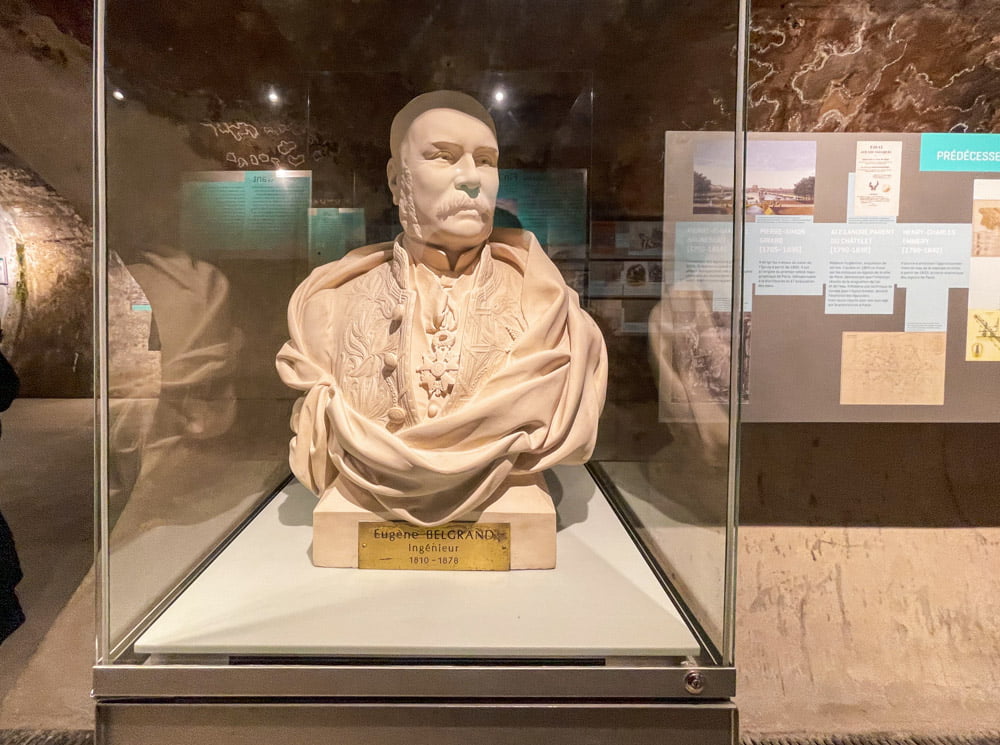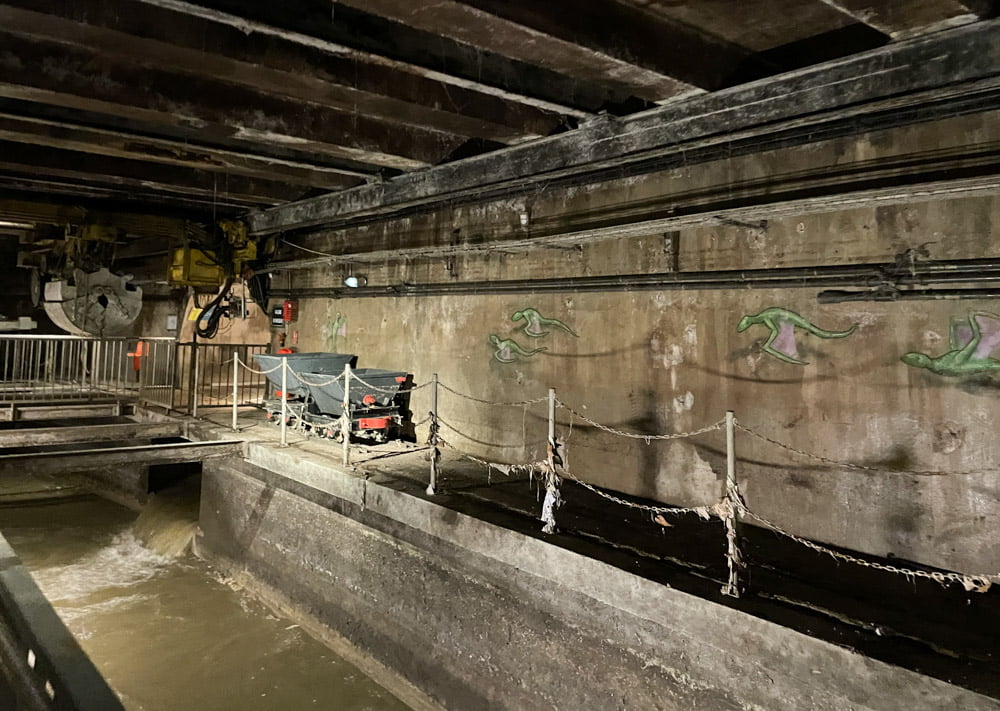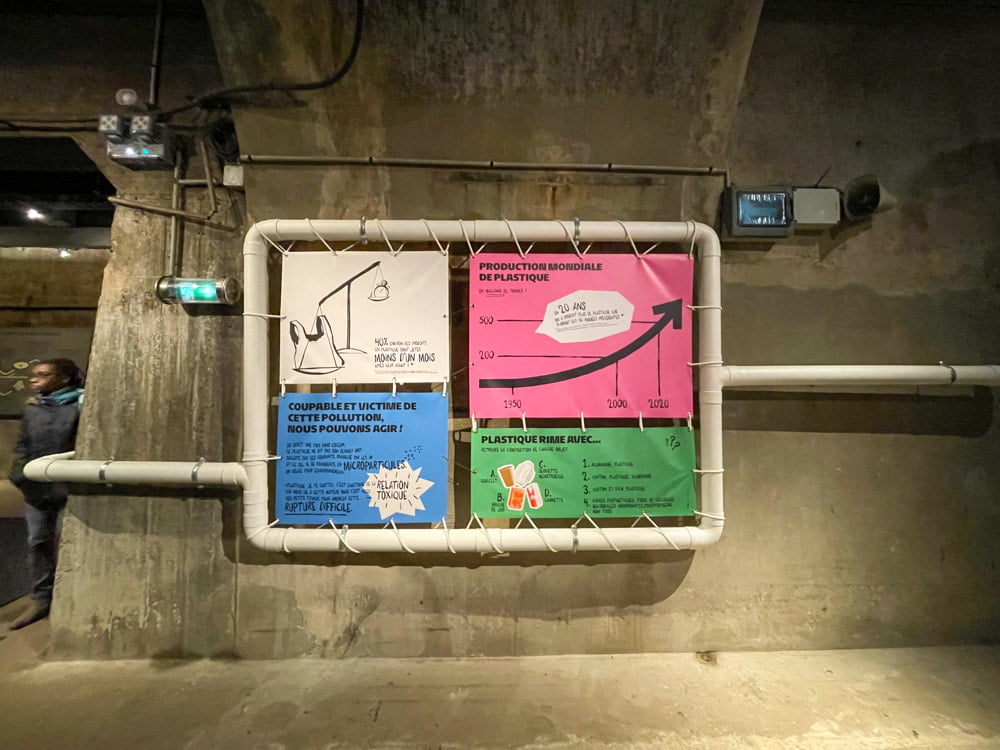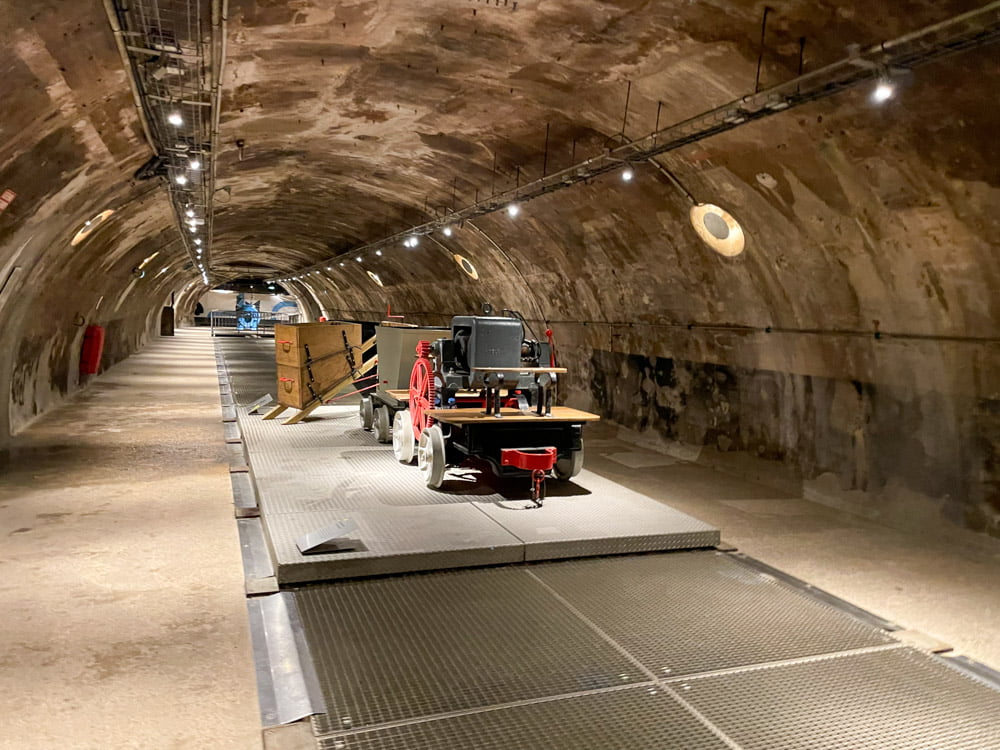Sewers may not be the first attraction you consider visiting in Paris. Still, the Musée des Egouts is a must-see museum in the French capital, however unusual and smelly it may be. A popular destination for children and curious adults alike, the Sewer Museum offers an educational experience on the history and technology of the French capital’s sewer network through interactive exhibits and guided tours.
Table of Contents
About the Paris sewer network (and why visit)
The Paris sewer network is one of the world’s largest and most complex wastewater drainage systems, spanning 2,600 km of underground tunnels through which more than 300 million cubic metres of rainwater and wastewater flow every year. This network not only plays a fundamental role in the public health and hygiene of the city but also represents a work of engineering of great historical and cultural value.
PLAN YOUR TRIP TO PARIS
Save money in Paris with the Paris City Card or the Paris Museum and Experiences Pass. Get free entry to major museums, climb the Eiffel Tower, and enjoy a Seine cruise and tourist bus.
To stay connected in France, remember to buy an Airalo eSim online, with data and phone coverage for your trip to Paris.
A visit to the Paris sewers is a unique and fascinating experience, allowing you to discover the hidden side of the French capital and walk through an underground city. The tunnels in the sewers, in fact, run parallel to the streets above. In the sewers, drinking water and fibre optics run over the ceiling of the tunnels. Sewage and rainwater run downwards in separate pipes or different tunnels.
Visiting the Paris sewer network is quite exciting from an engineering point of view. The entire network of tunnels can be inspected to avoid road work in case of problems. Wastewater flows by the force of gravity, then is collected, redirected and pumped to treatment and purification plants, where it is treated to remove contaminants and pollutants.
The birth and development of the Paris sewers
The sewers of Paris, which are a precious part of France’s industrial heritage, play a vital role in maintaining the capital’s hygiene. However, before 1800, the underground sewer network was minimal, with only 16 kilometres of sewers serving 550,000 inhabitants.
Sewer management was based on ancient Roman sewers. It split street pavements into two sides, with central watercourses collecting trash dragged towards the sewers by water discharged daily from hydrants.
In the 19th century, due to cholera epidemics and increased awareness of water’s role in disease transmission, Paris and other major European cities expanded their sewer networks. However, the situation was still not optimal, particularly during periods of heavy rain when black water flowed back into the clear waters.
Napoleon III’s transformation of Paris: large boulevards and new sewer tunnels
The Musée des Égouts in Paris is inside the galleries created during the city’s modernisation in 1852 initiated by Napoleon III. The prefect Georges Eugène Haussmann carried out the process. Haussmann, who had also designed the city’s iconic boulevards, entrusted the rethinking of the water service to engineer Eugène Belgrand.
Belgrand’s work aimed to provide pure water to Paris at all times. Thanks to his efforts, Paris gained new reservoirs, a drinking water network in 1865, and a sewer network that could recover cleaning and rainwater.
Paris’ sewer network became one of the most hygienic and advanced cities of its time. As a result, the Parisian sewers became a public attraction during the Universal Exhibition of 1867, with visitors able to tour the galleries just as they can today.

The sewers of Paris at the beginning of the 20th century
By the beginning of the 20th century, the sewer system in Paris had already become similar to what it is today. Sewage passed through the main conduit, and there were additional pipes for drinking water, non-potable water and compressed air pipes to transport pneumatic mail.
What’s on at the Paris Sewers Museum
The Paris Sewers Museum, Musée des Égouts in French, is an unusual and fascinating stop for visitors to Paris. Founded in 1867, it offers visitors the chance to discover the history and workings of the city’s sewers.
Initially, the sewers tour was done by boat. Still, as many visitors were reaching out to touch the sewers, it became a walking tour for hygiene. Today, the tour includes a permanent exhibition section and a guided tour through the sewer tunnels.
Permanent exhibition
In the main exhibit of the Paris Sewer Museum, open to the public without a guided tour, you can see various installations that explain how the sewer drainage system works, the history of the creation and evolution of sewers, and their role in disease prevention and public hygiene.
The museum aims to educate the public about waste management and show the vital work the city’s sewers do. You can find out how grey and black waters are sorted from homes or where the metro tunnels are located through interesting interactive installations. You can also observe the layout of the clear water and fibre optic pipes for yourself.

Guided tour of the Paris sewers: what to see
The Paris sewerage tour is an intriguing experience that allows visitors to explore a less-known side of the city. The sewerage network lies beneath the streets, with tunnels of various sizes crisscrossing the city’s surface.
The guided tour covers approximately 500 meters of tunnels. It provides a unique opportunity to comprehend the functioning of the sewer system and its significance for public hygiene. During the tour, the guide explains the operation of the sewer system, its history, and its importance for public hygiene and provides a wealth of fascinating information.
For instance, during the tour, my son and I learned that in the Napoleonic era, there was no safety equipment for entering the sewers. In contrast, it is mandatory to wear boots, gloves, helmets, torches, masks, and toxic gas detectors today.
Over the years, the way to clean sewage pipes has also evolved. Nowadays, workers use pressure rather than drag heavy metal balls through the tunnels or the ‘bateau vanne’, a boat for cleaning wider channels, displayed along the tour route. Another interesting fact is that the Paris metro tunnels never intersect with the sewer tunnels because they are at a lower level.

The Paris Sewers Museum with children: what to expect
The Paris Sewer Museum is an educational and fun experience to share with children. At the Musée des Égouts in Paris, children can have an immersive experience thanks to various interactive installations to learn about the history and functioning of the French capital’s sewer system. In the permanent exhibition part, they can watch videos with cartoons illustrating the workings of the sewer system and play with building drainage diagrams and tunnel diagrams that light up by pressing buttons.
During the guided tour, children have a lot of fun seeing the machinery and discovering sewers. To make the most of the experience at the Paris Sewers Museum, I recommend you prepare the children before the visit by explaining the history and functioning of the city’s sewer system. This way, the children will be more attentive and appreciate the guided tour more.
However, the tour guide who leads the tour can significantly influence the overall experience. A friendly and helpful guide can make the experience memorable, while a rude guide can leave one dissatisfied. Although my first time in the Paris Sewer Museum, I encountered a friendly and helpful guide, during a visit with my son and other friends, we ran into a rude guide who was disturbed that we were translating for the non-French speakers in our group.
Nevertheless, the Paris Sewer Museum remains a must-see experience for children, who will be fascinated by the history and functioning of the sewer system. Just as importantly, as a parent, you can turn your children’s fascination with poop into a helpful engineering skill.

Practical information for visiting the Paris Sewer Museum
The Paris Sewer Museum offers a unique experience that allows you to discover an extraordinary work of public engineering and to enter the imagination of the city’s inhabitants and artists, such as Victor Hugo, who made the characters of Les Miserables move along the underground tunnels.
Frequented mainly by French tourists, the Musée des Égouts is much less smelly today than a few years ago. It offers fascinating guided tours included in the entrance fee, perfect if you want to discover a lesser-known side of the French capital.
Considering that the museum is all underground and involves a short walk, I recommend wearing comfortable shoes and carrying a sweater or jacket, as the temperature underground is about 15 degrees all year round. Especially in summer, when Paris gets very hot and muggy, it is great to discover their refreshing temperature.

Guided tours of the Musée des Égouts in Paris
The entrance fee includes a French or English guided tour of the Paris Sewers Museum. Tours start every hour, depending on the number of people and the availability of guides. The meeting point is in the permanent exhibition area.
The museum also offers guided French educational tours for children aged 8 to 12. These visits include activities to discover the water cycle, learn ecological gestures to adopt as a family and understand the management of sewer flows to preserve the natural environment.
Paris Sewers Museum: opening hours and how much tickets cost
The Paris Sewer Museum is open Tuesday to Sunday from 10 am to 5 pm, with the last admission at 4 pm. When planning your trip, remember that, apart from Mondays, the museum is closed on 1 May, 25 December and the first 15 days of January.
Admission is free for those under 18, while the ticket price is €9 for adults. You can purchase your admission tickets directly at the ticket office, which also informs you about the language and time of the first available guided tour.
How to get to the Musée des Égouts de Paris
The Musée des Égouts in Paris is on the left side of the Seine (rive gauche) at Pont de l’Alma. Although it is entirely underground, you can recognise the entrance to the museum from the outside structure. You can get to the Sewer Museum comfortably by public transport. The nearest metro stop is Alma-Marceau, on line 9, while the RER line C stops at Pont de l’Alma. In any case, always check Google Maps for the best route to your starting point.
Musée des Égouts de Paris (Paris Sewers Museum)
Esplanade Habib Bourguiba
Pont de l’Alma, 75007 Paris
Where to stay in Paris
Sleeping in Paris can be expensive, prompting you to consider staying outside the city centre. In such a case, before selecting a hotel, I suggest you read my article on the best and worst neighbourhoods to stay in Paris.
I’ve visited Paris on several occasions for leisure and work, and I recommend a few places I’m familiar with. If you’re looking for a unique stay, Hôtel de Joséphine Bonaparte, built inside a 17th-century convent and located in the Marais district, is an excellent choice.
To save money, opt for the more affordable Hotel Bloum, situated close to the Opera and decorated with customised furnishings. Alternatively, the Aparthotel Adagio Paris Montmartre offers contemporary, self-catering apartments, perfect for families looking for more space in their rooms.
The Paris Sewers Museum is a must-visit place to discover an unusual side of the French capital and see the city from an underground perspective. This museum is unique because it offers the only tour of a sewer network in France. Comment if you have already visited the Musée des Égouts and if, after reading this article, you plan to add it to your list of things to see in Paris.
